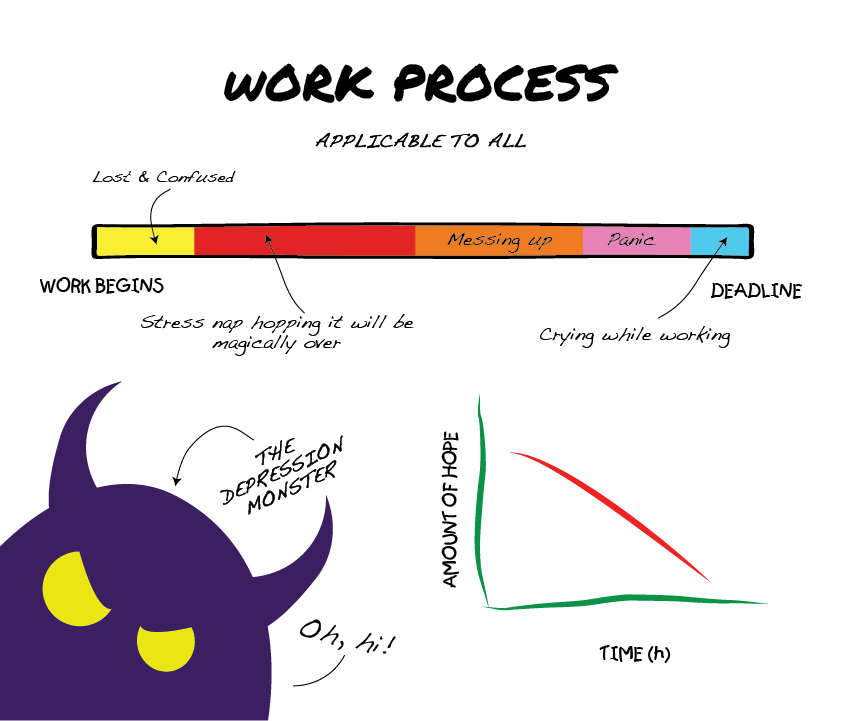
Theme: Time as a material
Context: By using time as a material, how can I communicate?
The Egyptians has divided the day into two 12-hour periods, and has used large obelisks to track the movement of the sun taking advantage of the expansion of shadow of the obelisks on the marked round foundation as indicator of time (Alder, 2002). They also have developed water clocks. Other ancient timekeeping devices include the candle clock (used in ancient China, Japan, England and Mesopotamia); the time stick (used in Persia, India, Tibet and some parts of Europe) and the hourglass.
The rules of time change vary depending on the purpose of the creators. In role-play games, day and night may shift within a duration (ex: Red Dead Redemption) or as the story progresses (ex: Don’t Starve). Chuck Jones uses principles of animation to represent time changes in his animation. In the video, Tom rushes to Jerry hoping to catch him. We can see when Tom runs, there is a drag and stretches on his tail. Jerry on the other hand has streaks and is represented as some shorts of a flying comet because he is very fast. So fast that normal eyes cannot see him when he is running. Faster movement means shorter time.
When creating an artwork, gameplay, interactive or animation piece, if there are movements, there must be an impact of time on the subject. Movements require a subtle or significant displacement over time. They could proceed in a linear velocity rendering a sense of stillness visually. Sometimes generating movement does not mean that the subject must move. Jane Dibbets expresses the change in time by using time itself. His set of photography captures the cycle of day and night. Observing his work, there is a feeling of a slow flow when scanning through the photos.
Bibliography/References:
Alder, K (2002), “The Measure of All Things: The Seven-Year Odyssey and Hidden Error that Transformed the World”, London: Little, Brown.
Audoin, C.; Guinot, B. (2001), “The Measurement of Time: Time, Frequency, and the Atomic Clock”, Cambridge: Cambridge University Press
Method:
How do to have movement, feelings and time squish into one canvas as my poor brain is running out of ideas? Then I remember James Veitch and his gold chart: Something so simple yet so in depth with such complex reflections behind it.
From here, it reminds me of other infographic examples about creative process. Time plays an important role in creative process because it is the deadline that weights the whole project. A bit drafty and hand drawing look with hand writing fonts harmonize to transfer such relatable feel that can hit like a bus.
Program used: Adobe Illustrator
Response:
Inspired by my own stress and depression, I made a work process infographic hopefully to fill my hollow heart with a bit of delightful... humour.
About This Work
By Chau Nguyen
Email Chau Nguyen
Published On: 06/10/2019
